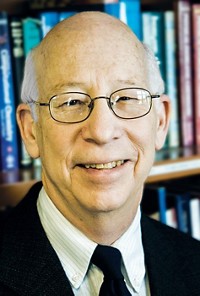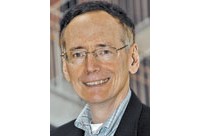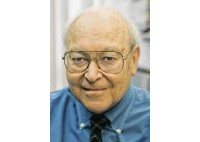Advertisement
Grab your lab coat. Let's get started
Welcome!
Welcome!
Create an account below to get 6 C&EN articles per month, receive newsletters and more - all free.
It seems this is your first time logging in online. Please enter the following information to continue.
As an ACS member you automatically get access to this site. All we need is few more details to create your reading experience.
Not you? Sign in with a different account.
Not you? Sign in with a different account.
ERROR 1
ERROR 1
ERROR 2
ERROR 2
ERROR 2
ERROR 2
ERROR 2
Password and Confirm password must match.
If you have an ACS member number, please enter it here so we can link this account to your membership. (optional)
ERROR 2
ACS values your privacy. By submitting your information, you are gaining access to C&EN and subscribing to our weekly newsletter. We use the information you provide to make your reading experience better, and we will never sell your data to third party members.
Synthesis
F. Albert Cotton Award in Synthetic Inorganic Chemistry
Sponsored by the F. Albert Cotton Endowment Fund
by Michael Torrice
January 3, 2011
| A version of this story appeared in
Volume 89, Issue 1
In his more than 40 years of independent research, Alan L. Balch, professor of chemistry at the University of California, Davis, has studied and synthesized myriad compounds spanning several inorganic fields, including bioinorganic, metal-cluster, and materials chemistry. “He has done it all, and he has done it well,” says Richard Eisenberg, professor of chemistry at the University of Rochester.
This year’s F. Albert Cotton Award recognizes Balch and his pioneering work to understand the structures and reactivities of fullerene, metal-cluster, and metalloporphyrin compounds.
Balch jumped into fullerene chemistry in the early 1990s after reading that scientists had produced the chemicals in quantities appropriate for synthesis—one of the few times he has read about science while on an airplane, he says. His lab reported some of the first structural studies of C60 and C70, including iridium complexes of C70 such as (η2–C70)Ir(CO)Cl(PPh3)2. Balch obtained the first crystal structures of endohedral fullerene complexes—ones with metal or noble gas atoms trapped inside the carbon balls. The gadolinium endohedral fullerene, GdN3@C80, is a magnetic resonance imaging contrast agent. Endohedral complexes of gadolinium prevent leakage of the metal from blood vessels, a common problem for the compounds.
In Balch’s metal-cluster work, his most noted achievement was the discovery of solvoluminescence in trinuclear gold complexes. One crystalline form of this gold(I) complex produces brilliant bursts of light when washed with solvent. Understanding this material’s luminescent properties could lead to novel sensors for solvent vapors.
Another long-standing area of Balch’s research involves studies of reactions between molecular oxygen and iron porphyrins. These studies have served as models for monooxygenase chemistry and produced the first identifications and characterizations of two key heme oxidation intermediates: the porphyrin-bound ferryl and peroxo-bridged porphyrin complexes. More recently, his group has examined the chemistry of the products of oxygen’s breakdown of porphyrin molecules, such as biliverdin.
“Alan’s work is elegantly conceived, carefully executed, and thoughtfully interpreted,” Eisenberg says, and it is “held in the highest esteem by the entire chemistry community. His productivity continues at a superbly high level, and he continues to forge new directions in his scientific inquiry.”
Besides the joy of exploring new chemistries, Balch says the other satisfying aspect of his career is mentoring students: “It’s extremely rewarding to see students go off and do things that you couldn’t imagine doing yourself or you couldn’t imagine them doing when they started as students.”
Balch earned a B.A. in chemistry from Cornell University in 1962, an M.A. in chemistry from Harvard University in 1965, and a Ph.D. in inorganic chemistry from Harvard in 1967. After graduating, he joined the faculty at the University of California, Los Angeles. In 1970, Balch moved upstate to UC Davis, where he has remained for 40 years. He reached full professor in 1977 and was named a distinguished professor in 1994. From 1994 to 1997, Balch served as chair of the UC Davis chemistry department.
Over his career, Balch has published more than 460 journal articles. He received the National Science Foundation Award for Special Creativity in 1989, and he is a fellow of the American Chemical Society.
Balch will deliver the award address before the ACS Division of Inorganic Chemistry.






Join the conversation
Contact the reporter
Submit a Letter to the Editor for publication
Engage with us on Twitter